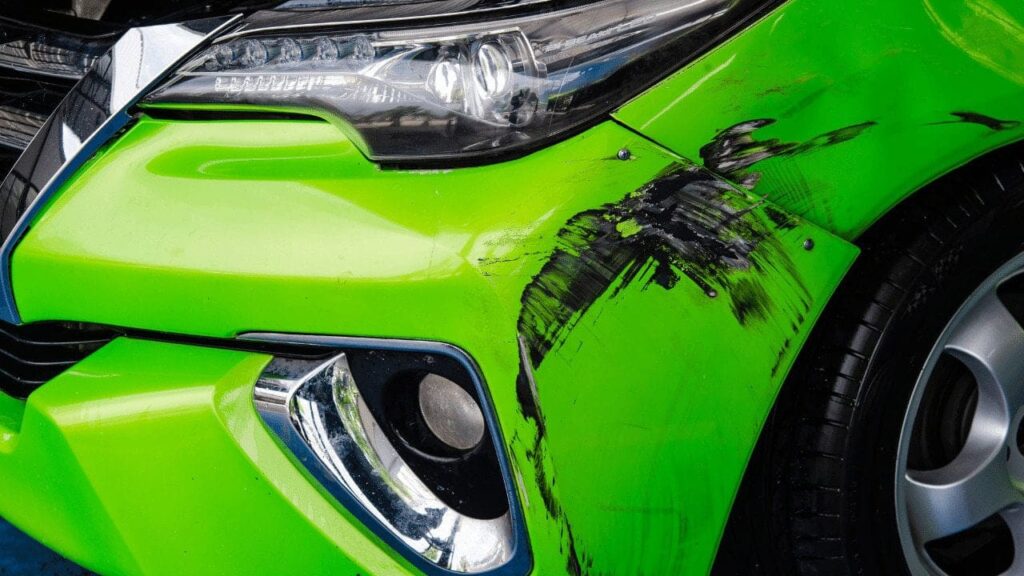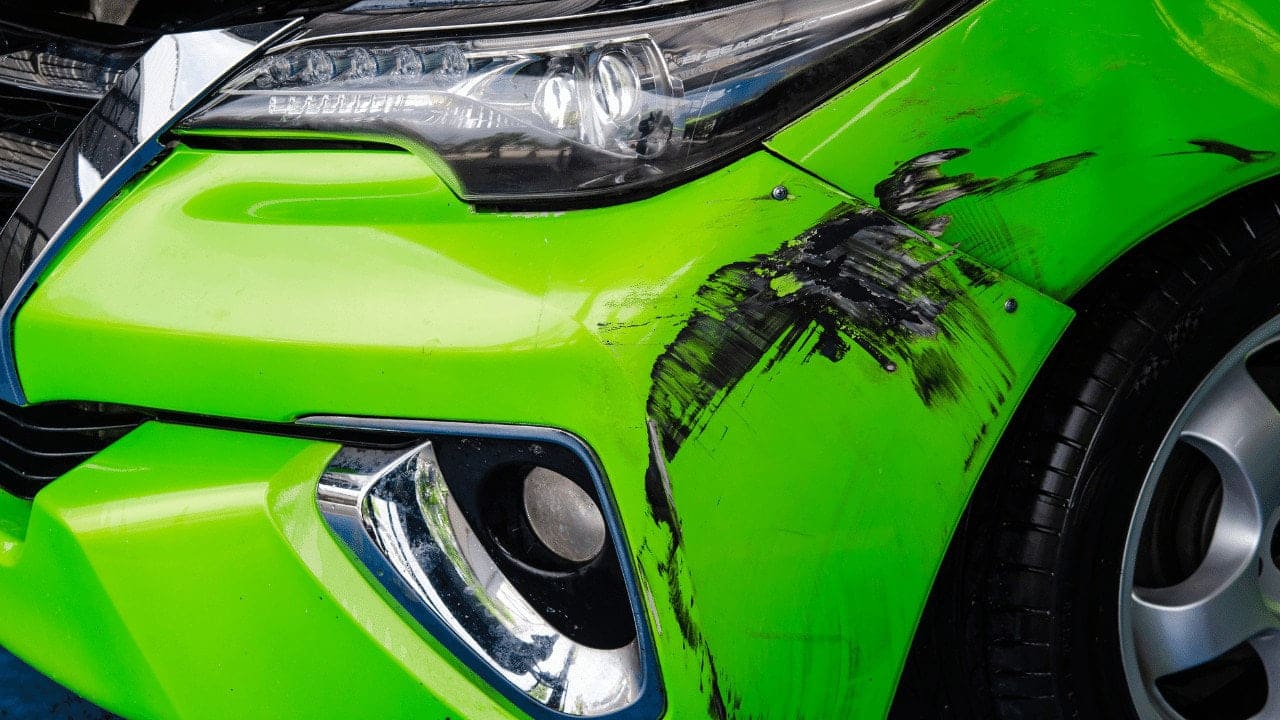
How to Remove Car Scuff Marks: A Comprehensive Guide
Discovering car scuff marks on your vehicle can be frustrating. Whether it’s a minor brush with a shopping cart or something more significant, these blemishes detract from your car’s appearance. The good news is that many car scuff marks can be removed at home with the right tools and techniques. This comprehensive guide provides step-by-step instructions and helpful tips to restore your car’s finish to its former glory.
Understanding Car Scuff Marks
What are Scuff Marks?
Scuff marks are superficial damages to your car’s paint, typically caused by friction against another object. They usually involve the transfer of material from the other object onto your car’s surface, rather than a deep scratch into the paint itself. Identifying the type of scuff mark is crucial for determining the best removal method.
Types of Scuff Marks
- Paint Transfer: This occurs when paint from another vehicle or object rubs onto your car.
- Clear Coat Scuffs: These are light scratches or abrasions that affect only the clear coat layer of your car’s paint.
- Deep Scratches: These penetrate through the clear coat and into the paint layer, requiring more intensive repair methods.
Essential Tools and Materials
Before you begin, gather the necessary tools and materials. Having everything on hand will streamline the process and ensure the best results. Removing car scuff marks requires patience and the right equipment.
- Clean Microfiber Towels: Essential for wiping and buffing surfaces without causing further scratches.
- Car Wash Soap: Use a pH-balanced car wash soap to clean the affected area.
- Water: For rinsing and mixing with car wash soap.
- Clay Bar: Helps to remove embedded contaminants from the paint surface.
- Detailing Spray: Provides lubrication for the clay bar and enhances the paint’s shine.
- Rubbing Compound: A mild abrasive used to remove paint transfer and light scuffs.
- Polishing Compound: Used after rubbing compound to refine the paint and restore gloss.
- Wax or Sealant: Protects the paint and adds a layer of shine.
- Applicator Pads: For applying rubbing compound, polishing compound, and wax.
- Buffing Machine (Optional): Can speed up the polishing process but requires caution to avoid damaging the paint.
Step-by-Step Guide to Removing Car Scuff Marks
Preparing the Area
Proper preparation is key to achieving a flawless finish. Start by thoroughly cleaning the area around the car scuff marks.
- Wash the Car: Use car wash soap and water to remove dirt and grime. Rinse thoroughly and dry with a microfiber towel.
- Inspect the Scuff Mark: Determine the severity of the scuff to choose the appropriate removal method.
- Clay Bar Treatment: If the area feels rough, use a clay bar to remove embedded contaminants. Spray detailing spray onto the surface and gently rub the clay bar back and forth until the surface feels smooth.
Removing Minor Scuff Marks
For light car scuff marks and paint transfer, a rubbing compound is often sufficient. Removing these types of marks is a straightforward process.
- Apply Rubbing Compound: Apply a small amount of rubbing compound to an applicator pad.
- Rub the Affected Area: Gently rub the compound onto the scuff mark in a circular motion. Apply light to moderate pressure.
- Wipe Off Residue: Use a clean microfiber towel to wipe off the excess compound.
- Inspect the Results: If the scuff mark is still visible, repeat the process.
Polishing the Paint
After using rubbing compound, the paint may appear slightly dull. Polishing will restore the gloss and refine the finish. Polishing is a crucial step in removing car scuff marks effectively.
- Apply Polishing Compound: Apply a small amount of polishing compound to a clean applicator pad.
- Polish the Area: Gently polish the area in a circular motion. Use light pressure.
- Wipe Off Residue: Use a clean microfiber towel to wipe off the excess polishing compound.
Waxing and Sealing
Waxing or sealing the paint will protect it from future damage and enhance its shine. This final step is essential for maintaining the appearance of your car and preventing further car scuff marks.
- Apply Wax or Sealant: Apply a thin, even layer of wax or sealant to the polished area using an applicator pad.
- Allow to Dry: Let the wax or sealant dry according to the manufacturer’s instructions.
- Buff the Surface: Use a clean microfiber towel to buff the surface to a high shine.
Dealing with Deep Scratches
Deep scratches that penetrate the clear coat and paint layer require more advanced repair techniques. These often involve using touch-up paint or professional detailing services. Trying to remove deep car scuff marks without proper knowledge can worsen the damage.
Using Touch-Up Paint
- Clean the Scratch: Thoroughly clean the scratch and the surrounding area.
- Apply Primer (if necessary): Some touch-up paint kits include a primer for bare metal surfaces.
- Apply Touch-Up Paint: Apply thin layers of touch-up paint to the scratch, allowing each layer to dry completely.
- Wet Sand (Optional): After the paint has dried, you can lightly wet sand the area with fine-grit sandpaper to blend it with the surrounding paint.
- Polish and Wax: Polish the area to restore the shine and apply wax for protection.
Professional Detailing Services
For severe scratches or if you’re uncomfortable performing the repairs yourself, consider hiring a professional detailing service. Professionals have the expertise and equipment to restore your car’s paint to its original condition. They can effectively remove car scuff marks and provide a lasting finish.
Preventing Future Scuff Marks
Prevention is always better than cure. Taking steps to protect your car’s paint can minimize the risk of future car scuff marks. Here are some tips:
- Park Carefully: Avoid parking too close to other vehicles or objects that could potentially scratch your car.
- Use Car Covers: A car cover can protect your car from scratches, dust, and other environmental elements.
- Regular Washing and Waxing: Regular washing and waxing will keep your car’s paint in good condition and provide a protective barrier.
- Be Mindful of Your Surroundings: Pay attention to your surroundings when opening doors or loading items into your car.
Advanced Techniques and Considerations
Using a Buffing Machine
A buffing machine can significantly speed up the polishing process and provide a more even finish. However, it requires caution and practice to avoid damaging the paint. When removing car scuff marks with a buffer, always start with the least aggressive pad and compound.
- Choose the Right Pad: Use a foam polishing pad for polishing and a foam cutting pad for more aggressive correction.
- Apply Compound Sparingly: Apply a small amount of compound to the pad and spread it evenly over the area.
- Use Low Speed: Start with a low speed setting and gradually increase as needed.
- Keep the Machine Moving: Keep the buffing machine moving to avoid overheating the paint.
- Inspect Frequently: Regularly inspect the paint to ensure you’re not removing too much material.
Color Matching Touch-Up Paint
When using touch-up paint, it’s crucial to match the color to your car’s original paint. You can find your car’s paint code on a sticker located on the driver’s side doorjamb or in the engine compartment. Use this code to purchase the correct touch-up paint from an auto parts store or online retailer. Ensure you’re using the right color when addressing car scuff marks.
The Importance of Lighting
Proper lighting is essential for identifying and removing car scuff marks. Use bright, direct lighting to inspect the paint surface and ensure you’re not missing any imperfections. LED work lights are ideal for this purpose as they provide bright, even illumination without generating excessive heat.
Conclusion
Removing car scuff marks is a manageable task with the right tools, techniques, and a bit of patience. By following this comprehensive guide, you can restore your car’s finish and maintain its appearance. Remember to take your time, work carefully, and don’t hesitate to seek professional help if needed. With proper care and attention, you can keep your car looking its best for years to come. Regular maintenance and prompt attention to minor damages will prevent car scuff marks from becoming major issues. [See also: Car Detailing Tips for Beginners] and [See also: Best Car Waxes for Protecting Your Paint]

